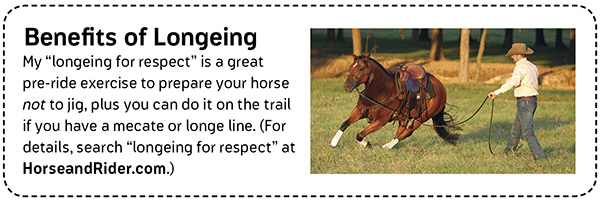Jigging—that irritating half-prance horses fall into when they want to go faster and you won’t let them—can ruin an otherwise pleasurable trail ride. I’m going to show you what to do to condition your horse away from this exasperating behavior. You’ll learn to use one rein to get your horse’s feet moving and activate the thinking side of his brain. This puts his excess energy to good use convincing him that attempting to jig just isn’t worth all the effort that results. He’s then able to relax into a flat-footed walk, instead of focusing on whatever’s making him want to jig.
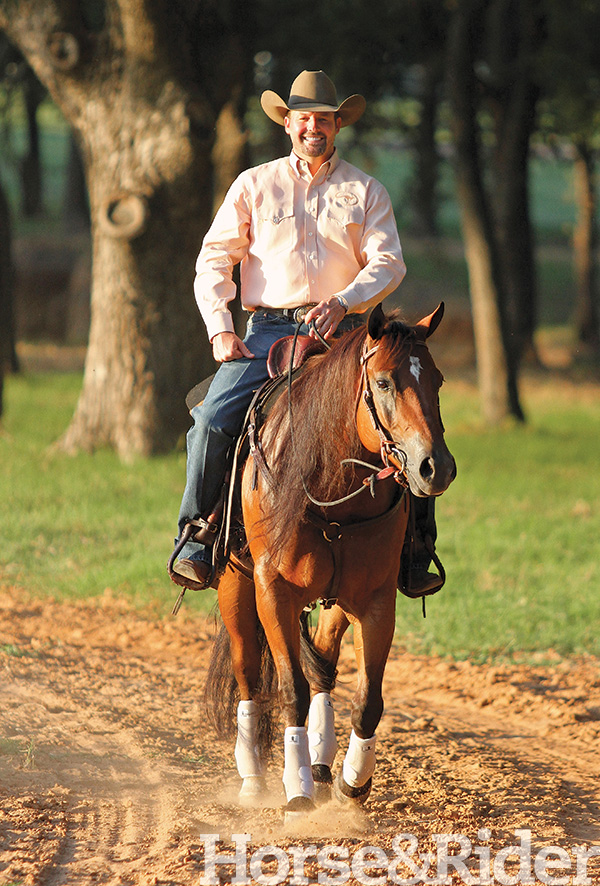
An added benefit of this approach is that it helps you feel safer and more in charge.
OK, let’s get to it.
What Causes Jigging?
Many factors can prompt your horse to jig. We’ll assume he’s broke enough to be out on the trail in the first place; if not, then that’s your primary factor.
Simply being too fresh and full of pent-up energy can also cause jigging. It means you did a poor job of preparing your horse for the trail ride—you should’ve taken the edge off his energy beforehand with vigorous groundwork exercises.
Nervousness is another possible cause. You may be on a new trail and, as a prey animal, your horse is uncomfortable in the strange environment. Or he may be bothered about being in a group of horses, and fussing over keeping up with or getting ahead of the pack. Ideally, don’t take your horse out in a group until he’s reliably calm and relaxed by himself on the trail—to do so is one of the quickest ways to set him up to fail.
Use One Rein
When your horse does start to jig, do not try to make him stop by pulling back on both reins. This is one of the biggest mistakes riders make, and it only invites resistance. The more you try to make a horse slow down with two reins, the more upset and nervous he gets, as it just makes him feel trapped and claustrophobic.
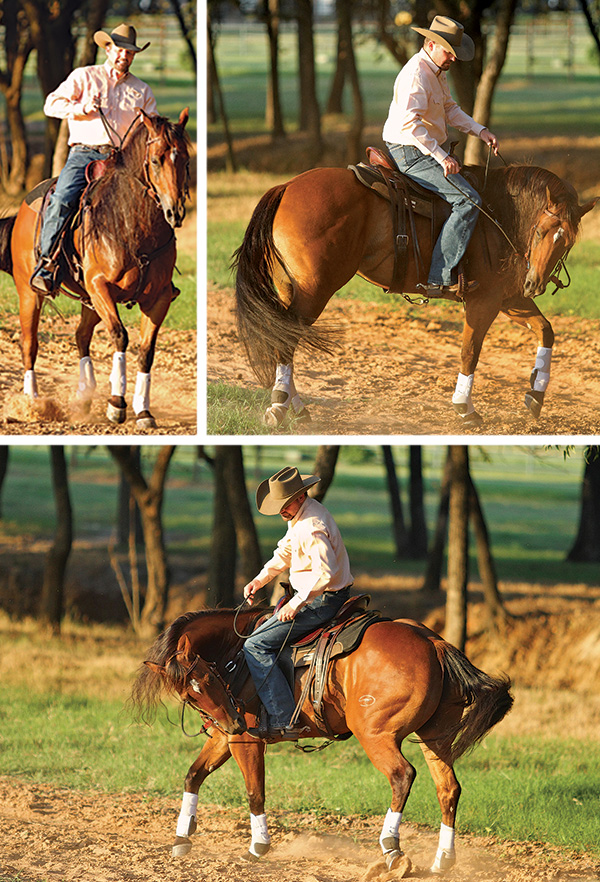
Instead, use one rein at a time, drawing your hand back to your hip on the same side, to bend him into a small circle in one direction, then the other. Reinforce your hand with your leg on the same side (for example, when circling to the left, apply your left leg to bend his body in a leftward arc). Hustle his feet so he’s going in at least a brisk trot, making him work hard and putting him through frequent changes of direction.
Your message here is, “If you want to speed up, let’s go!” But instead of letting him build speed as he goes down the trail, you’re directing his feet where you want them to go, plus making him move a bit faster than he’d choose on his own.
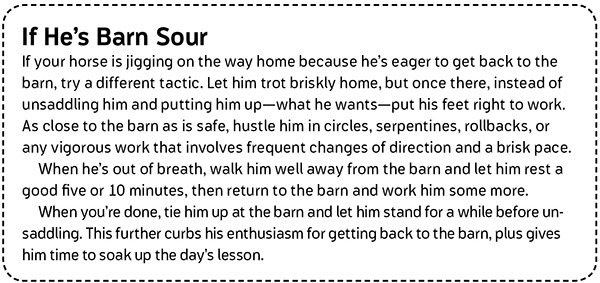
Dare Him to Jig
As soon as he relaxes—by dropping his head and neck and feeling soft in your hands—let him slow down to a walk. Put him on a big, loose rein, and dare him to jig again. If you did a good job of directing his feet, he’ll be happy to slow down to a flat-footed walk. And when he does, keep him on the loose rein and give him a rub as a reward.
If he gets jiggy again, immediately put his feet back to work. For variety, you can trot him in a series of serpentines, constantly asking him to reshape his body and move his feet. Or use the environment—serpentine around trees and bushes, or circle around large rocks.
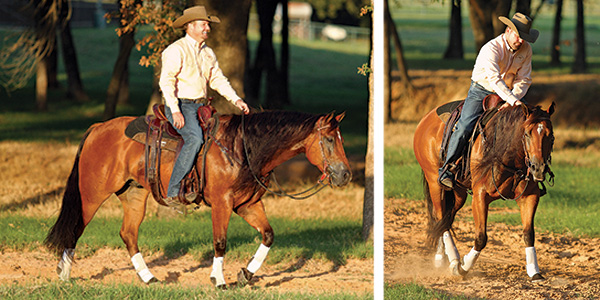
Move him energetically, but don’t be so aggressive that you scare him. A horse that’s jigging is usually nervous; thumping his sides with your spurs or jerking on the reins will only make him more reactive.
At the same time, don’t let him just jog around, either. You want him to sweat and realize that walking on a loose rein is by far the better option. By repeating this training over time, your horse will get the message.
Clinton Anderson, Stephenville, Texas, is a clinician, horse trainer, and competitor. Learn more about his clinics, appearances, and educational materials at DownunderHorsemanship.com.
